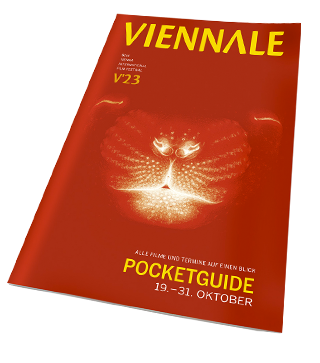
AS IT WAS. AS IT IS
A History of the Viennale from 1960 to the Present
It was a “leaden time”: on one of the geopolitical borders of the Cold War, a superficially denazified Austria was attempting to reinvent itself as a cultural superpower, an “intellectual continent” in the words of the historian Friedrich Heer. The so-called “long 1950s” continued far into the next decade and were dominated by the cultural and educational policies of the first post-war education minister, Felix Hurdes of the conservative Austrian People’s Party. The policies reflected right-wing Catholic “culturalism” and were almost seamlessly connected to the period before the Nazi annexation of Austria in 1938. In the official state cultural doctrine of the post-war era it was especially important that the foremost institutions, the Burgtheater and the State Opera, be actively involved in the creation of sense and meaning.

Cinema, on the other hand, was considered an inferior artistic phenomenon, a leisure activity for the lower classes and a reflection of the typically American culture of chewing-gum that a middle-class elite preferred not to find sticking to the soles of their shoes. Domestic Austrian film production consisted mostly of theatrical comedies, rural farces, tourism films, Vienna musical comedies and the revue films of producer Franz Antel, and they stretched in a never-ending line towards the horizon.
Austrian film journalists at the time believed that cinematic culture had reached a historical low ebb, and they sought waysand means to reverse the flow. A group formed around the journalist Sigmund Kennedy, who was to become the Viennale’s firstdirector. It in-cluded Fritz Walden from the daily Arbeiter-Zeitung and the filmdirector and critic Edwin Zbonek. In 1960 they took advantage of a cooperative project between the Association of Austrian Film Journalists and the cinema Künstlerhaus Kino to launch a project with the rather awkward title International Festival of the Most Interesting Films of the Year 1959. It was an arte-povera event in theliteral sense of the term, with a shoestring budget and no subsidies. The program consisted of eight feature films and ten shortsfrom a total of 17 countries.In this early period it was possible to unite disparate positionsunder the roof of a shared enthusiasm for film. While Kennedy was a moralizing media educator to whom film provided important teaching material, Zbonek, who was later to become festivaldirector, was a fanatic adherent of artistic cinema. He advocated showing films in their original language, for example, which was hardly a matter of course at the time. The fact that Vienna’s filmfestival was viewed as moderately successful is also a reflection oft he Viennale’s extremely positive relationship with the media. In her dissertation on the history of the festival, Rita Hochwimmer sums it up: “The media for which Zbonek, Kennedy and Waldenwrote provided wide coverage of the film festival, with most of the reporting done by Fritz Walden, Edwin Zbonek and Sigmund Kennedy.”
Text: Thomas Miessgang



